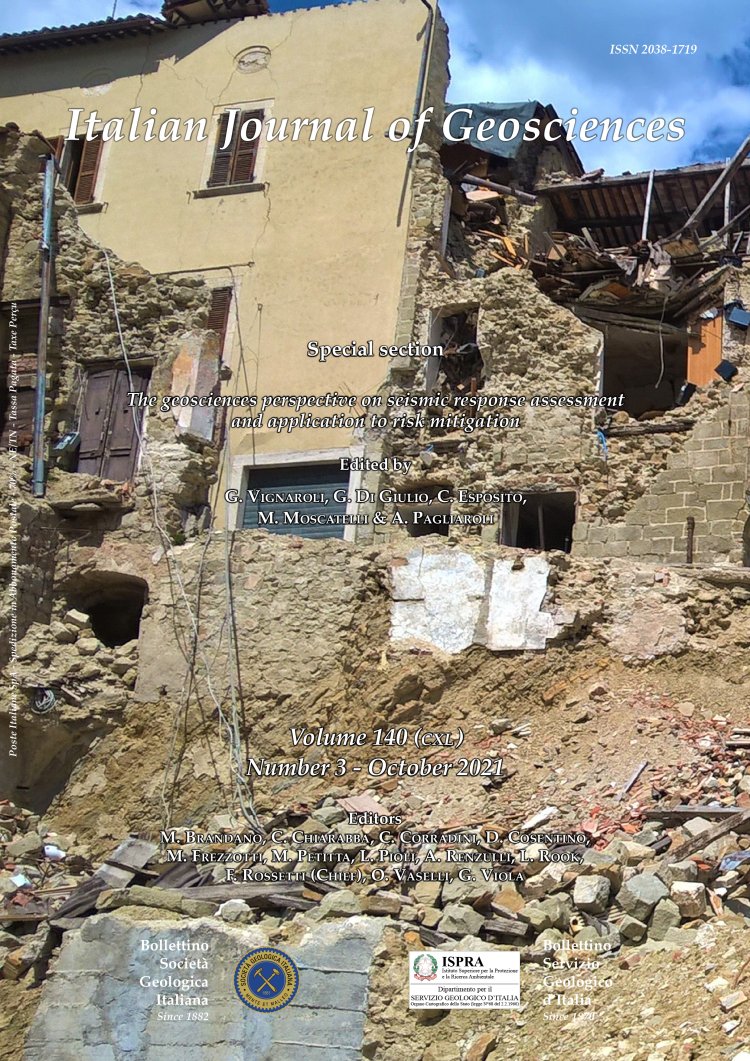
An inter-disciplinary/multi-step approach in defining the input motion for the seismic analysis of masonry buildings struck by the May 29, 2012 M6.0 Emilia earthquake in Northern Italy
Antonino Famà (1,2), Elisa Zuccolo (1,2), Francesca Bozzoni (2), Carlo G. Lai (1,2) & Luca Martelli (3)
(1) University of Pavia, Department of Civil and Architectural Engineering, Via A. Ferrata, 3 - 27100 Pavia, Italy.
(2) European Centre for Training and Research in Earthquake Engineering, Via A. Ferrata, 1 - 27100 Pavia, Italy.
(3) Regione Emilia-Romagna, Direzione Generale Cura del Ter- ritorio e dell’Ambiente; Servizio geologico, sismico e dei suoli; Viale della Fiera, 8 - 40127 Bologna, Italy.
Corresponding author e-mail: elisa.zuccolo@eucentre.it
Volume: 140 (2021) f.3
Pages: 347-364
Abstract
Numerical simulations of earthquake damage on buildings require the definition of a reliable and appropriate seismic input (e.g., acceleration time histories and/or response spectra) in order to validate the accuracy of structural models in reproducing the observed level of damage – or no damage – associated with a particular earthquake. However, for sites that are not located close to active seismic stations, the definition of the ground motion that would have likely been recorded during an earthquake is not a trivial task.
In this paper, we present the results of a case study where the seismic input at the sites of construction of three modern unreinforced masonry buildings caused by the Emilia May 29, 2012 M6.0 earthquake has been recreated following three different methods involving natural, artificial, and deconvolved accelerograms. The differences in the results are compared and contrasted highlighting the intrinsic limitations of the three different approaches while addressing an appropriate use of the seismic input when assessing the seismic performance of the three buildings.
Keywords
Get Full Text